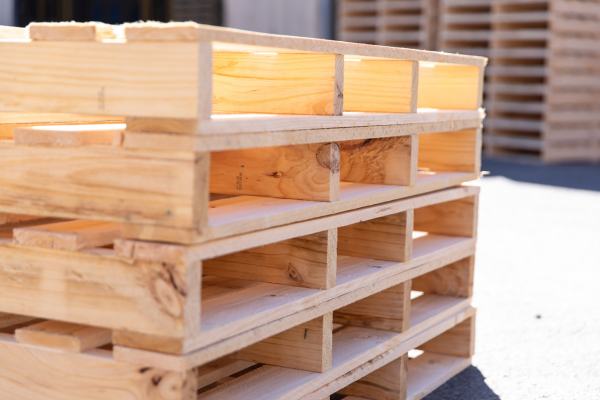Using pallets for shipping and exporting your goods ensures they are safely delivered to their new location. They’re sturdy and stable, perfect for the safe delivery of your products. Here are a few useful dos and don’ts when using pallets for shipping and exporting.
The Dos of using pallets for shipping
- Research the size of the pallets you need. The logistical requirements for shipping varies between countries, so it’s vital for businesses to do their research to ensure they’re aware of the different pallet sizes needed for their target countries. Here’s some information to help. [hyperlink to article on Gov links article]
- Research whether or not you can use timber pallets to export to your target country. Due to the risk of timber pallets being contaminated some countries have restrictions on them being used. When exporting goods on timber pallets you need to ensure they’re heat treated and certified. [hyperlink to heat treatment page]
- Keep the size of your pallets stay consistent. Not only is a standard size usually a requirement of the country you’re shipping to, it allows for ease of transport and helps optimise the space that is available keeping the costs down.
- Pack your pallets to optimise space. Use packing patterns such as block stacking placing items close together will help reduce the risk of them getting damaged.
- Ensure your pallet is sturdy when packed. Strap in your freight or wrap your goods as an extra safety measure to ensure they won’t fall and be damaged in transit. [hyperlink to article about packing pallets]
- Use high quality packing materials such as good quality boxes, stretch film and high-quality pallets.
- Label your freight include what each pallet has on it, ensure you use labels such as ‘do not stack’ etc. to ensure your goods are handled appropriately.
The Don’ts of using pallets for shipping
- Don’t wait until the last minute to organise and pack your pallets. It takes time to ensure your pallets are packed neat and tidy to optimise the space. Try to minimise gaps when packing your pallet as this will help stop your goods from moving around during transit, helping to avoid damage.
- Don’t purchase your pallets last minute. Order your pallets as soon as you know how many you will need for your shipment.
- It’s important to ensure you don’t use damaged or rotten pallets. Timber pallets that have been left out in the weather will easily rot. Don’t use these pallets as they will most likely lead to your goods being damaged and be a safety issue.
- Don’t use pallets you’ve made yourself. It’s important that you use high quality pallets to ensure your goods are safe during the transporting process and that you meet shipping and country requirements.
- Don’t overload your pallet. It’s extremely dangerous to have overhanging goods. Any overhanging goods will most likely bump into an adjacent stack damaging multiple shipments. They are also a safety risk. Your goods must be firmly contained within the surface of the pallet in order to have a safe transportation process.
- Don’t go over the weight capacity of the pallet.
Learning the ins and outs of using pallets for shipping will ensure safer and easier transportation of your goods, making the process seamless and proactively avoiding problems.
If you need timber, plastic or recycled pallets for domestic or international shipping get in touch with our team!

